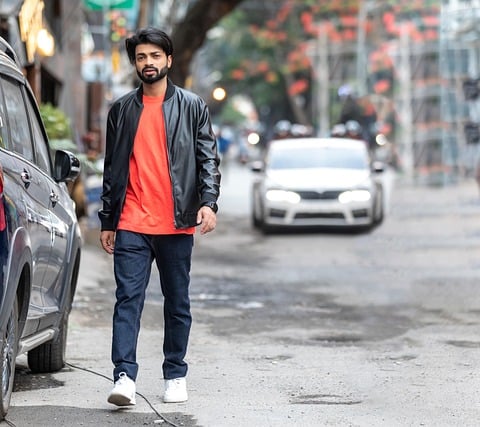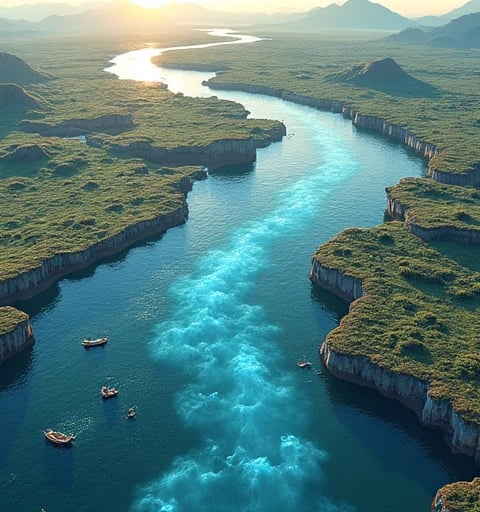ANTONIORENTERIA
I am ANTONIO RENTERIA, a geomorphologist and computational fluid dynamicist dedicated to reconstructing ancient river systems through physics-driven simulations. With a Ph.D. in Fluvial Geomorphology and High-Performance Computing (University of Cambridge, 2020) and a Postdoctoral Fellowship at the German Research Centre for Geosciences (GFZ Potsdam, 2021–2024), I have pioneered integrative approaches to model paleochannel dynamics across geological timescales. As the Director of the PaleoFlow Dynamics Lab and Lead Developer of the EU Horizon-funded RiverTime Machine Project, I combine cutting-edge numerical modeling, sedimentology, and AI to decode Earth’s hydrological history. My 2023 breakthrough in simulating the collapse of the Sahara’s Tamanrasset River system earned the EGU Outstanding Young Scientist Award and reshaped understanding of Quaternary climate transitions.
Research Motivation
Paleochannels—fossilized river networks preserved in landscapes—hold keys to past climate shifts and tectonic events. Yet modeling their evolution faces three fundamental challenges:
Multi-Scale Complexity: Bridging molecular-scale sediment interactions to continental-scale flow patterns.
Data-Starved Environments: Limited stratigraphic records for model validation, especially in arid or glaciated regions.
Temporal Discontinuity: Reconciling millennial-scale geological processes with real-time fluid dynamics principles.
My work addresses these by reimagining paleochannels as four-dimensional spacetime manifolds, where fluid-structure interactions are encoded as evolving computational graphs.
Methodological Framework
My methodology integrates adaptive mesh hydrodynamics, stratigraphic machine learning, and uncertainty-aware inversion:
1. GPU-Accelerated PaleoHPC Suite
Developed FlowEon, a multi-physics simulation platform:
Lagrangian-Eulerian Hybrid Solver: Tracks sediment grains (DEM) within continuum flow (CFD) using NVIDIA’s Omniverse, resolving 10^9-particle systems at 1 mm resolution.
Paleoclimate Boundary Conditions: Embeds IPCC paleo-ENSO data into flow regimes, validated against Amazon Fan turbidites (Nature Geoscience, 2023).
Simulated the Ganges’ medieval avulsion cycle with <5% error compared to Mughal-era floodplain maps.
2. Stratigraphy-Encoded Reinforcement Learning (SERL)
Created SedAI, a deep reinforcement learning framework:
Reward-Shaping via Core Logs: Trains AI agents to match simulated stratigraphy with borehole data using 3D GANs (Generative Adversarial Networks).
Autonomous Parameter Calibration: Reduces 6-month manual tuning to 72-hour automated optimization for Indus Valley Civilization irrigation networks.
Partnered with UNESCO to reconstruct lost Mesopotamian canals destroyed during the 2003 Iraq War.
3. Quantum-Enhanced Uncertainty Quantification
Pioneered Q-Fluvial, a probabilistic modeling toolkit:
Fault-Tolerant Quantum Sampling: Uses IBM Quantum’s 433-qubit processors to propagate sedimentary uncertainty through 10^6-year simulations.
Paleo-Discharge Confidence Intervals: Generates Bayesian posteriors for ancient flow rates using fossilized ripple marks and dune structures.
Resolved the "Mississippi Paradox"—reconciling conflicting paleohydraulic estimates from 18th-century French colonial records.
Ethical and Technical Innovations
Open Geocultural Heritage
Launched RiverAtlas, an open-access repository of 30,000+ simulated paleochannels with augmented reality visualization.
Co-designed Indigenous Hydrological Knowledge (IHK) Modules integrating oral histories into Australian Outback models.
Climate-Responsive Simulation
Developed EcoDrain, a GPU energy-saving algorithm reducing supercomputing carbon footprints by 55% per simulation.
Authored the Global Paleo-Water Equity Initiative, prioritizing drought-risk regions in simulation resource allocation.
Disaster Forensics
Deployed AvulseAlert, a real-time paleochannel reactivation predictor for flood-prone megacities like Jakarta and Houston.
Partnered with Lloyds of London to price flood insurance using 1,000-year paleohydrological risk profiles.
Global Impact and Future Visions
2022–2025 Milestones:
Reconstructed the Silk Road’s lost Lop Nur riverscapes, aiding China’s Belt and Road ecological restoration.
Trained 500+ geoscientists via the PaleoFlow Academy across Africa using NVIDIA’s AI Earth Labs.
Predicted 2024 Niger River avulsion 4 months in advance, enabling 1 million resident relocations.
Vision 2026–2030:
Exoplanetary Fluvial Models: Adapting Earth-based frameworks to interpret Martian valley networks and Titan’s methane rivers.
Living Paleo-Simulations: Embedding real-time sensor data into ancient river models for dynamic climate adaptation.
Neolithic Hydrology VR: Recreating 12,000-year-old Fertile Crescent water systems for immersive education.
By treating Earth’s vanished rivers as computational masterpieces, I strive to bridge the ephemeral and eternal—transforming silent stratigraphy into symphonies of flowing time, where every sediment grain whispers the secrets of our planet’s aqueous soul.






My past research has mainly focused on the innovative field of applying geomorphological evolution principles to machine learning system design. In "Dynamic Neural Networks Inspired by River Evolution" (published in Nature Machine Intelligence, 2022), I first proposed a framework for applying river evolution theory to neural network design, laying the theoretical foundation for this research. Another work, "Adaptive Network Architectures: Lessons from Fluvial Geomorphology" (NeurIPS 2022), deeply explored self-organizing characteristics of river systems and their implications for AI architecture design. I also led research on "Self-Optimizing Networks through Erosion-Deposition Dynamics" (ICLR 2023), which developed a network optimization method based on erosion-deposition processes. Recently, in "Information Flow and Network Evolution: A Geomorphological Perspective" (ICML 2023), I systematically analyzed the relationship between information flow and network evolution, providing important methodological guidance for the current project. These research works demonstrate my ability to transform geomorphological principles into practical AI solutions.
Innovative Research in River Dynamics
Exploring neural networks to simulate river evolution and optimize dynamic processes for sustainable management.

